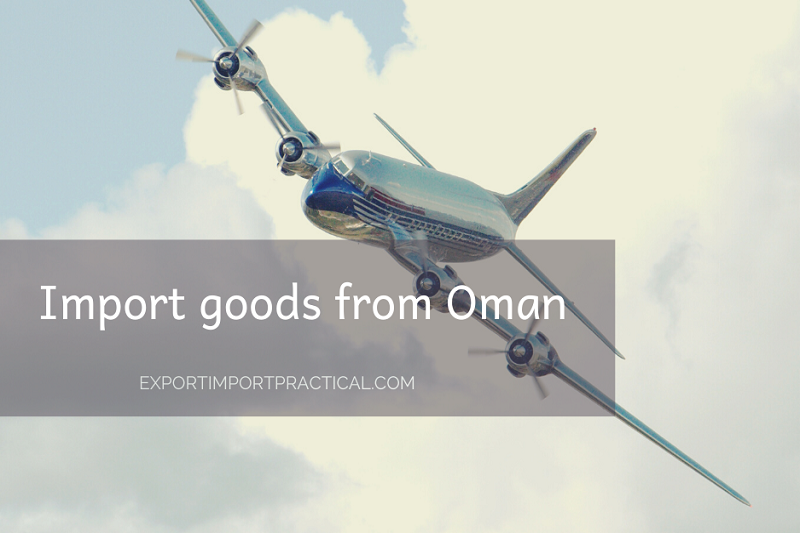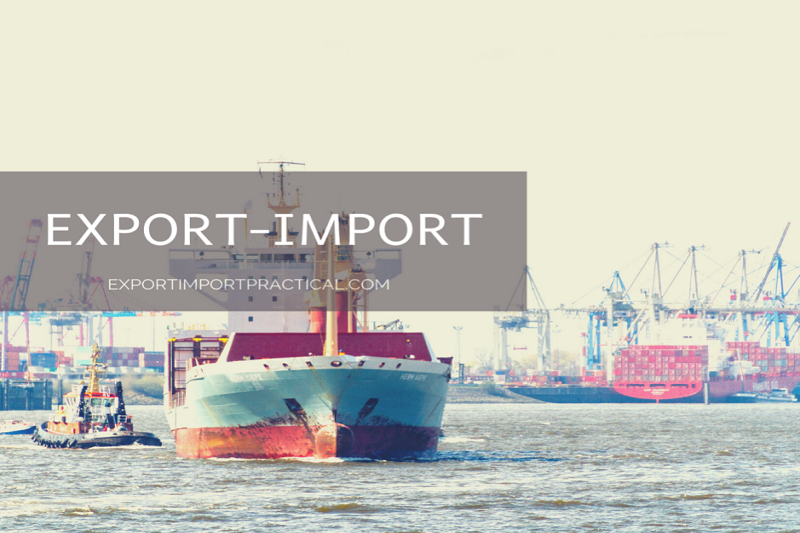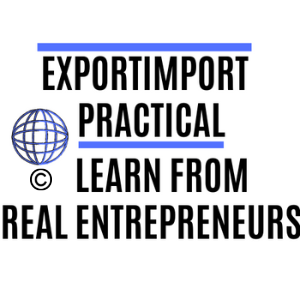Are you looking to learn or start the import export business in or with Oman but don’t know how? Do you want to know Oman’s main export products and import products and how to start exporting to Oman? Do you want to know how to find importers from Oman? This article will introduce how to do import-export business in or with Oman.
Oman has the full name which is the Kingdom of Oman (Sultanate of Oman)
Oman has an important geostrategic position, close to the coast in the southeastern part of the Arabian peninsula, overlooking the Arabian Sea, the Gulf of Oman, and the Strait of Hormuz (about 30% of the oil shipped worldwide through this strait), along the bustling international shipping route, convenient to connect trade with the Gulf, Africa, and the Middle East.
Due to its deep seaport and favorable location, re-exporting is one of Oman’s economic activities.
Currently, Oman companies are looking for business partners, cooperation in construction and consulting in construction, medical construction, road transport, commerce, furniture, aquaculture, and organic fertilizers, construction materials, food, electromechanical products, trading in floor tiles and marble, tourism, oil and gas services, and electrical equipment. If you can supply these, then there can be a great exporting opportunity for you.
PS! Before you continue with the article, we recommend to enroll our free online export import course below:
Overview about the country
Oman is a high-income country with an economy dominated by oil resources, tourism and gas-related industries are the main economic sectors in the government’s economic development strategy. Oman exports mainly oil, re-exports fish, metals, textiles. This country has mainly a capitalistic market.
Imports mainly machinery, industrial goods, food, livestock, lubricants. . The main suppliers for Oman come from Japan, Korea, China, Thailand, UAE, USA, UK, Germany.

The business environment of Oman
Oman has an open business environment. This country respects the principle of “free market” and the supreme legality of the contract, protects intellectual property rights, applies import tax, low corporate income tax.
Capital assets and profits of the business are free to move abroad. In Oman, there is no personal income tax. Individuals are free to transfer money abroad. In this Term, Oman’s business environment has many similarities to Singapore and Hong Kong and to Dubai.
Enterprises are exempted from income tax for five years from the date of establishment. For businesses operating in some of the priority sectors, they will be tax-exempt for the next five years. Investing in some priority industries and sectors has the opportunity to access government loans with very low or zero preferential interest rates.
When building the factory, investors are allowed to import duty-free machinery and equipment for production materials. If you are an export-oriented producer, there is exempt from import tax on raw materials and has access to export credit insurance.
The Ministry of Industry and Trade Oman applies a “one-stop-shop” for business registration.
The Oman workforce is rated highly skilled and is bilingual: Arabic and English.
Oman is the import market for food because the mountainous terrain and desert can not develop agricultural production, so the policy focuses on the management of food imports, specifically: Rice, seafood, vegetables, meat products.
Oman is a member of the Gulf Cooperation Council (GCC). This country agrees to implement consistent policies governing trade, investment, tariffs, food import policy in the direction of tariff preferences (0-5% CIF).
Although food and foodstuffs enjoy the GCC’s priority import policy, they face two harsh non-tariff barriers, food safety and hygiene standards (applied according to American & European standards. Europe) and Halal standards (Islamic law).
PS! All imported goods in general and food, in particular, must present C / O (Certificate of Origin).
Export – import business in Oman
Oman’s total exports of goods and services were $ 47.70 billion in 2018.
Oman exports: oil (70% exported to capitalist countries, of which 60% to Japan), re-exported fish, metals, textiles.
Import: machinery, transport equipment, industrial goods, food, livestock.
Main customers from: Japan, Korea, China, Thailand, America, UK, Germany.
Read also: How to start an export-import business in Saudi Arabia.
Oman Main Export Products
Crude oil
Crude oil is Oman’s most exported commodity, with 30.7 billion USD in 2017.
Total crude oil production in 2017 is at 30 million barrels, a daily average of 967,000 barrels.
The total volume of crude oil exported abroad is 25,440,811 barrels, average daily is 820,671 barrels.
Gas
Oman’s gas production has increased by 12.5%, reaching 43.75 billion cubic meters in 2018. The total gas reserves are at around 25 trillion cubic feet (with 22 mines).
China is the oil majority importer from Oman.
Oman’s total LNG export volume also jumped 19% to 10.2 million tons in 2018 from 8.6 million tons the previous year. Oman’s export volume of condensate gas reached 0.239 million tons.
Date palm
Oman is the eighth largest date producer with an average annual production of 260,000 tons per year. Date palm is the primary fruit crop in the country, and it constitutes 82% of all fruit crops in Oman.
Seafood
According to the World Food Organization (FAO), Oman’s annual seafood export turnover is over 100 million USD. Currently, Oman regulates six species banned from export, including Tuna, mackerel, Al Sahwa, Al Anqad, Al Kofar, and some shrimp species. The ban and control were imposed due to a decrease in Oman’s annual catches of seafood.
Oman Main Import Products
Foods
Oman imports 60% of its food needs. It is a potential market for agricultural products exported to Oman.
Rice
Oman uses mainly two rice trading channels with other countries:
– Using the government-to-government channels in stockpiling, cooperating agricultural investments to take off products, or there are fluctuations in food security and or political security.
– Using the Traders and Enterprises channel in rice transactions for commercial, investment, and distribution purposes, to meet the needs of the entire population under the management of standards, quantities, State prices through the Ministry of Trade and Industry.
Cement
Oman’s cement demand is at 16,000 tons/day, of which a shortage of about 3,000-4,000 tons/day is imported.
How to export goods to Oman
The process of exporting goods consists of many closely related steps. For an overview of the merchandise export process, we summarize the following main steps:
Step 1: Market research – To know if it is possible to do export business
The Oman market consists of many complex factors, different from other markets, so you need to learn to export. Exporting by sea, shipping costs and viewing flights, Imported food, pharmaceutical, and cosmetic products need Halal certification.
For example, Oman is:
– Potential for oil, gas
– Financial potential, capital resources, high solvency.
– Science and technology potentials: biotechnology, high technology (Israel), agriculture, petrochemicals.
– High import demand for goods such as food, agricultural products, seafood, consumer goods, and construction materials.
Step 2: Find the local importers – these can be your buyers
To export goods, you must find partners.
A great Oman partner should have the ability to resell your goods: Have a reputation in the market, time of business operations, financial capacity, technical facilities, distribution network, and enough of assets.
Signing a contract is very important. Whether conduct the contract depends on the terms that the two parties have committed. Thus, you can export the goods and avoid risks in international business.
To find more customers and getting more export orders – marketing is crucial. Export marketing includes many activities like collection of information from the target market, making sure the channels how to reach to the potential customers, making sure the local prices and requirements.
Step 3: Apply for an export license
If the exported goods are through many border gates, the agency will issue the foreign trade enterprise a tracking slip. When receiving the goods at the checkpoint, the customs office will subtract them from the tracking slip.
Step 4: Pack the export goods
It is the step of packing your export packages as soon as you prepare to schedule your export.
The packing is an essential step in preparing goods.
You need to understand the requirements of the appropriate type of packages with high economic efficiency. Besides you also need to check the quality of the goods before delivery.
Step 5: Purchase cargo insurance.
Exports often present risks and losses. So buying insurance for exported goods is the best way to safety for the exported goods during transportation. You can get insurance for your exports at insurance companies.
Step 6: Select the export delivery
Export by air:
Based on the consignment contract of the owner of the goods, the forwarder makes the delivery documents for the airline and export procedures. Documents usually include:
Import-export permit, if the goods are subject to a permit (Export Permit)
Commercial Invoice
The detailed inventory of goods, sometimes you can use Packing List
Manifest of goods (Manifest), made by the forwarder when he consolidates many individual shipments with the same master bill of lading (MAWB)
Certificate of Origin
Export by sea:
Oman has Cincinnati, Sohar, Salalar, Mina Qaboos, Muscat seaport. From this seaport, there is direct sea transport to many Asian countries such as China, Singapore. From Oman seaports, goods from other countries can go to countries in the region.
Full container loaded-FCL
FCL cargo means goods that are loaded with containers when they are in transit. The shipper is responsible for packing and discharging goods from the container. Goods will be in one or more containers depending on the quantity and requirements of each shipment.
Less than container loaded (LCL)
Container retailer (LCL) is a form of transportation in which a forwarder company collects goods of many different shippers into one container to organize the transportation. They will transport ordinary cargo from the CFS warehouse to the CFS warehouse (Container Freight Station).
Step 7: L/C Payment
You must complete a set of payment documents such as commercial invoice, packing list, sea waybill, C / O certificate of origin, and sterilization certificate. If you are Using L / C payment, you must submit documents to the advisory bank.
Payment by money transfer
When receiving the bank’s credit note, the exporter can secure to export the goods and ensure payment for the goods.
Note: To ensure that exporters receive money from their partners, exporters must do two operations:
+ To request the importer to have a copy of the money transfer
+ Contact the bank directly to see if money is floating on your foreign currency account or not
Read more about export import procedures and documentation.
How to import goods from Oman

Step 1: Select the goods to import from Oman
To choose the necessary products to import from Oman, you need to study the supply-demand relationship and the market’s consumption capacity. Then you can determine the volume of goods that can sell on the market.
Depending on your purpose and type of importation,
For example, if you are a merchant importing retail goods, you can go to Oman to choose unique items, from cookware to jewelry. Oman is full of authentic handcrafted products such as:
Pottery
Although ceramics are produced throughout Oman, the city of Bahla is famous for its ceramic products due to the high-quality clay contained in its wadis.
Omani wood
Omani wood is famous for its high quality and ability to be shaped and engraved into various tools and objects. People use it to store clothing, jewelry, or even food.
Frankincense
It looks like a small yellow or beige stone, giving a unique scent when burning it. Frankincense is in Oman and other countries.
Baskets and crafts
Palm leaves, green or dried which people used to make crafts such as baskets. It is for storing dates and grains, for cooking meat, or for processing honey. Palm leaves are for some of the finest crafts.
Oman silver crafts
Oman’s silver is of the highest quality and well known in the Arab world. As well as being used for making jewelry and khanjar, it crafts unique crafts such as perfume bottles, small jewelry boxes, incense burners. (traditional Omani coffee pot).
Step 2: Select the suppliers
Since you have a reliable supplier, the goods will be on favorable terms, quickly recovered capital, no disputes arise, and vice versa.
To find supplier partners, you can use one or more of the following methods: through the press, publications, on-site investigations, investigative services of credit investigating companies, through purchasing – Trial sale.
Step 3: Sign the contract
An international goods sale and purchase contract usually consists of two parts: representations and terms and conditions.
In the presentation:
Commodity: description of the goods
Quality: quality of goods
Quantity: Quantity and weight of goods
Price: unit price, together with the terms of trade (FOB loading port)
Shipment: time, delivery location, In the contract, it is necessary to specify the delivery time: Delivery of goods not on time can cause damage and may incur penalties.
Payment currency: Must be a stable, freely convertible currency on the international money market, which can be the currency of the exporting or importing party or the third country.
In addition, for the contract to be complete, to ensure it meets the requirements of the parties, there are other important terms such as:
Packing: packing specifications, and labeling of goods
Warranty: goods warranty (if any)
Force Majeure
Claims: complaints
Arbitration: referee
Other conditions: other regulations
Legal basis for signing a contract: This can be a government agreement, a protocol, people also give the willingness of the two parties to sign a contract
Step 4: Track the shipping process
You should observe the seller packing and deliver at the port. When do they packing, how long do they pay? How long does it take to transport from factory to port? It is essential information for you to schedule the following shipments (In case of urgent need and to match the train schedule)
Regardless of which shipping method is, you should pay attention to the following points:
– Name of carrier
– Schedule how many trips/week
– How long does the shipping time take?
– When is the latest delivery time?
– Date of departure/date of arrival
– Go directly or convey (direct / tranship)
– Port of departure/destination
Step 5: Make an international payment, prepare documents and customs clearance when goods arrive
Contract payment period between two parties. For example: In a contract that says the payment terms TT 100% after receiving a copy of BL, invoice, packing list, you must have all the papers before they send it.
After you have the complete set of documents, you make a customs declaration and customs clearance.
How to be successful in the export-import business in Oman?

Doing export-import business is constantly learning and growing yourself
Nowadays, more and more import-export companies coming into the market. If you do not upgrade yourself, you will eliminate yourself from this business. Factors and market situations are continuously changing. Because of the development of information technology the market changing speed is faster than before.
Therefore, learning is crucial so that you can maintain your entrepreneurial ability and ensure your venture’s success!
Have a experiences mentor, and follow 100% how they do
The shortest way to success is to find a guide or mentor. In business, you need to find yourself a mentor with has enough experience, knowledge, and skills to guide you step-by-step. This will save you from unnecessary costs and costly mistakes.
Create a business plan
Planning your export-import business is crucial. Collect information from the market and business environment, analyze it and work out a detailed business plan. Investments and real actions should be made acc to the plan and considering as many factors and information as possible. It is possible to get insights and industry information from the Oman trade advisory. Research and a detailed business plan can raise your probability of success remarkably.
For more inspiration and business ideas, read also export-import business ideas.
Conclusion
Our online import/export course will provide you with expert knowledge of import and export activities, providing you with a solid foundation in this business. You can register for this online course to receive more offers in our program.
If you want to learn how to start your own export-import business online or offline, then we have online courses and programs which will give you the best guide to start an international business from scratch. We have also tools and resources which help you to grow and expand your business and get more customers and raise profitability.
We advise you to take courses and use the resources ad tools listed below:
- Export-import business courses and programs
- Most popular online exim course: “Zero to first deal“
- Resources and action plan for exporters/importers, online sellers.


2 comments